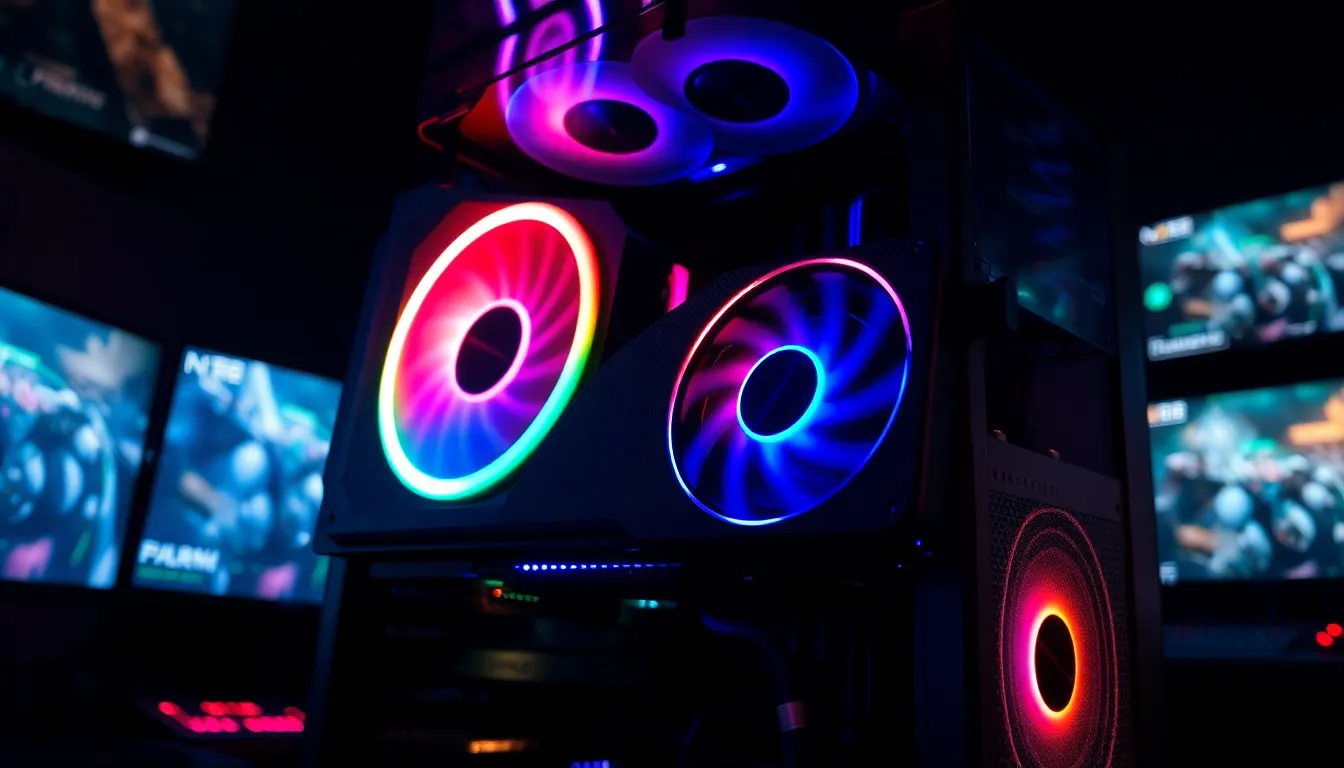Imagine a world where your computer runs smoother than a buttered penguin on ice. That’s the magic of Windows Hardware Accelerated GPU Scheduling. With this nifty feature, your graphics processing unit takes the reins, managing tasks like a seasoned conductor leading a symphony. Gone are the days of lagging frames and stuttering gameplay; it’s time to unleash your PC’s true potential.
Table of Contents
ToggleOverview of Windows Hardware Accelerated GPU Scheduling
Windows Hardware Accelerated GPU Scheduling improves task management by enabling the GPU to take control of scheduling its resources. This feature optimizes performance during gaming and graphics-intensive applications, allowing for smoother rendering and reduced latency. By offloading scheduling to the GPU, the CPU can focus on other critical tasks, enhancing overall system responsiveness.
Performance gains become noticeable in scenarios like gaming, where framerates are crucial. Users report fewer instances of stuttering and lag, as the GPU dynamically allocates its resources based on demand. The feature employs a new architecture designed to work seamlessly with DirectX 12, optimizing rendering pipelines more effectively than traditional methods.
Enabling Hardware Accelerated GPU Scheduling requires a compatible GPU and the latest Windows updates. Users can activate this feature through Windows Settings under Graphics settings. Prior to activation, ensuring the latest graphics drivers are installed ensures maximum efficiency.
This capability carries particular significance for gamers and professionals using graphic design software. Improved workflows manifest as higher framerates and more stable performance, crucial for immersive experiences. Developers benefit as well, leveraging this feature to create optimized applications that tap into the GPU’s scheduling capabilities.
Adopting Hardware Accelerated GPU Scheduling enhances how Windows handles graphics-intensive tasks, streamlining processes, and contributing to a superior user experience. This strategic shift in resource management not only benefits individual applications but also improves overall system performance.
Benefits of GPU Scheduling in Windows

GPU scheduling in Windows offers critical benefits that enhance overall system performance and user experience.
Improved Performance
Improved performance stands as a primary benefit of GPU scheduling. The GPU manages its resource allocation, allowing it to handle tasks more efficiently. This leads to smoother gameplay and reduced frame drops during intense gaming sessions. Reduced latency enhances visual experiences, particularly in fast-paced titles. Higher framerates result from better optimization of rendering processes, making gaming more enjoyable. The technology also supports more consistent performance in graphics-intensive applications, benefiting both gamers and creative professionals alike.
Enhanced Responsiveness
Enhanced responsiveness proves essential for seamless user interactions. With GPU scheduling, the system responds quicker to input commands, minimizing lag while switching between applications. Dynamic allocation allows the GPU to adjust resources based on current workloads, thus improving multitasking capabilities. In scenarios where rapid response is crucial, like gaming or video editing, users experience noticeably faster rendering times. Responsive graphics presentation creates a more immersive experience, capturing users’ attention and enhancing their overall enjoyment of applications. This innovation contributes significantly to user satisfaction in various demanding environments.
How GPU Scheduling Works
GPU scheduling optimizes how a system manages graphics tasks, enhancing performance and user experience. This feature allows the GPU to take control over resource allocation, working alongside the operating system to streamline processes effectively.
Operating System Integration
Windows integrates GPU scheduling to significantly improve how graphical tasks are handled. DirectX 12 plays a vital role, enabling better communication between the GPU and applications. The integration allows for a more efficient rendering pipeline, which results in less latency and smoother frame rates. Users see immediate benefits when running graphics-intensive applications, as the operating system coordinates tasks more effectively. Enhancements like these make the experience more enjoyable, especially for gamers and professionals involved in creative fields.
Hardware Requirements
To utilize Hardware Accelerated GPU Scheduling, specific hardware requirements must be met. Compatible GPUs from manufacturers such as NVIDIA and AMD are essential. Additionally, the system must run on the latest Windows versions, ensuring optimal performance. Users should verify that their drivers are up to date, as outdated drivers can undermine performance. With the right hardware and software setup in place, users maximize the advantages of GPU scheduling, leading to smoother and more responsive graphics experiences.
Configuring Windows Hardware Accelerated GPU Scheduling
Configuring Windows Hardware Accelerated GPU Scheduling enhances performance for gaming and graphics applications. Users can enable this feature through a few straightforward steps.
Step-by-Step Guide
- Open Settings: Start by clicking the Start menu and selecting Settings.
- Navigate to Gaming: Select the Gaming option, then click on Game Mode.
- Access Graphics Settings: Find Graphics settings and click on it.
- Enable Hardware Scheduling: Toggle the Hardware-accelerated GPU scheduling option to On.
- Restart Your PC: Reboot the computer to apply changes.
These steps effectively enable Hardware Accelerated GPU Scheduling. Following this guide ensures optimal performance and responsiveness in graphics tasks.
Troubleshooting Common Issues
Occasionally, users encounter issues after enabling Hardware Accelerated GPU Scheduling. Addressing these problems quickly improves the user experience.
- Check Compatibility: First, verify that the GPU and drivers are compatible. NVIDIA and AMD provide guidance on their websites.
- Update Drivers: Ensure graphics drivers are up-to-date, as outdated drivers can lead to performance issues.
- Disable and Re-enable: Disable the feature, restart the computer, then re-enable it to reset the settings.
- Review Windows Updates: Confirm that the latest Windows updates have been installed, as they often address bugs.
These troubleshooting steps resolve common issues, allowing users to enjoy enhanced graphics performance.
Windows Hardware Accelerated GPU Scheduling represents a significant leap forward in optimizing graphics performance. By empowering the GPU to manage its own resource allocation, users can enjoy smoother gameplay and enhanced responsiveness. This feature not only benefits gamers but also professionals who rely on graphic-intensive applications.
With the right hardware and software updates, enabling this capability can lead to a more immersive experience. As developers continue to create optimized applications that leverage GPU scheduling, the overall user experience will only improve. Embracing this technology ensures that users maximize their system’s potential while enjoying the latest advancements in graphics performance.


